‘The 21st of June is an important day for me and all my colleagues at Anantha Yoga. It is our guru Desikachar’s birthday. We rarely referred to him by name, we still say “Sir” a respectful and very tamilian thing to do. May be the 21st being called a world Yoga day is in some ways a gift too. Since Yoga will be remembered by so many on that day means at least some will do so in deep respect and sincerity.
“Desikachar, as a person, was a beautiful synthesis of two lovely minds – that of Krishanamcharya (his father), and equally of Krishnamurti (his student and his lifelong friend)” Jyotsna Narayan once said as we were reminiscing about Sir. I speak for all of us, his disciples, that for us it is a time of deep gratitude to him for being who he was, for offering us what he did and guiding us on the path. It is a time to reiterate to ourselves our commitment to his integrity and authenticity.’
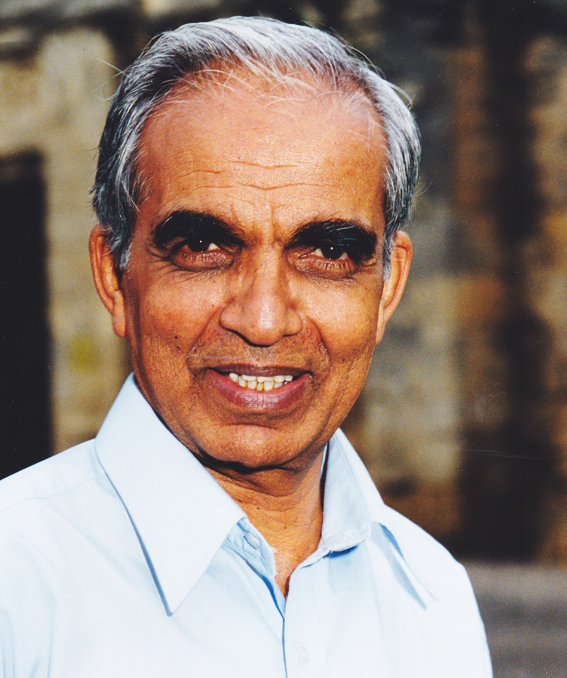
Gayatri: It is a perfect day to remember Desikachar or ‘Sir’ as everyone fondly remembered him. More so for us, who never had the opportunity to see or meet him, yet as yoga practitioners we are custodians of his teachings, energy and tradition.
Raghu: Yes, absolutely. I am very happy to reminisce about my days as his student. Nothing gives me more satisfaction than remembering my teachers.
Gayatri: So, tell us how did you first meet him and how did that meeting go?
Raghu: A friend of mine Prabhakar, from my school days and IIT, was a student of Shri. Desikachar for quite some time and we used to talk about him and yoga. My Mother’s side of the family had been in touch with Krishnamacharya for a long time too. Several members of our family were his students for many years. Though I was interested in this, I never got around to studying it and going deeper into it. Then ‘life hit me!’ especially after my marriage to Sashi, we went through a very difficult period. Prabhakar, then suggested that I meet Shri. Desikachar, so we went one day. During that period, I was desperately looking for help, in fact Sir wrote in the introduction to one of my books on yoga about how desperate I was. After meeting me, he asked me to think about why I wanted to study yoga and asked me to come back later. This went on for a few rounds. Finally, we started our classes.
I distinctly remember my first class when after the AsanA course we finished with some PrANAyAma. I felt a sense of lightness both physically and in the mind, just like a heavy cloud was lifted off my mind, a cloud that had become a constant companion cleared up. It was clear to me that this was the path I had to follow. The next 10-12 years were spent learning from Shri. Desikachar and his father as well as teaching at the Krishnamacharya Yoga Mandiram (KYM).
Gayatri: Wow, what about your interactions with Krishnamacharya?
Raghu: After a year of learning with Sir, he invited some of us to become teachers at KYM, so a few of us also started our studies with his father. AsanA and PrANAyAma classes were with Sir and we studied texts like the yoga sutra, BhagavadGita, Upanishads etc., with his father. Sir was also part of the classes with his father.
Gayatri: What were his distinct qualities as a teacher?
Raghu: His ability to sense into what a person is going through was profound. This sensitivity touched the student in a very deep way and opened an inner space for the student that was subtle. This enabled the student to become self-aware.
Am I making sense?
Gayatri: Yes
Raghu: The fact that there is a sensitive observation of me by my teacher increases my ability to observe myself.
Shri. Desikachar’s second ability was his mastery in understanding AsanA. The courses he would design for people would fit their unique needs perfectly.
Gayatri: So, he would know what is happening to a student as soon as he/she walked in?
Raghu: Oh yes, I did not have to say much because he would clearly sense what was happening and ask relevant questions. That helped me open up and have a conversation with him. It was not only in formal settings but even in casual settings he would say something that would be spot on.
Gayatri: It seems he was quite easy-going and friendly?
Raghu: There was a space of friendliness available but a respectful and sincere one. He would even land up at home suddenly! Prabhakar would drive him around. I still remember the time when Sashi and I just had our child, so Sir visited us. He looked at Sashi and then turned around towards me with a raised eyebrow and said ‘What kind of yoga teacher are you? Can’t you see she requires some help with her back?’
Gayatri: Did Sashi also learn from Desikachar?
Raghu: She learnt from Maneka, Sir’s wife.
Gayatri: I remember Sashi mentioning how these classes helped her during pregnancy.
How was he different from his father? Krishnamacharya was quite strict no?

Raghu: The difference was the time and context in which Yogacharya was born and brought up. Naturally, he was a very traditional and strict person. Yogacharya Krishnamacharya would get up very early in the morning, around 4 am to do his upAsanA and rituals before starting his work. Whereas Shri. Desikachar was a modern person. Sir went to college, did well in his studies, worked in a large organization and so on, and yet he followed many of the practices that his father did. He had a very good understanding and openness to everything around him. More than anything, there was a respectful friendliness about him.
Gayatri: Sashi had mentioned a comment on facebook that he helped people born post-independence merge the cultures of pre and post-independence. Can you elaborate?
Raghu: Many of us like Prabhakar, Mukundan and myself went to Sir as part of our seeking. We were fresh graduates of IIT and were fairly westernized. But we were also deeply unhappy with what we were seeing around us, though I can safely say that the current scenario is much more disturbing than those days. We were a bunch of fairly conscious ‘activists’ who protested against climate change, brought out the first pamphlet against the Narmada dam and protested against Bhopal Gas tragedy. The Vietnam war was at its peak, the extractive nature of American capitalism was becoming very evident. Mukundan had gone to Stanford to study but came back soon after because he did not want to be part of that context. When I finished IIT, there were numerous opportunities to go to US and study and do research. I decided not to get sucked into a system that was extractive. Thus, we were looking for something deep, meaningful and I cannot be more thankful to Sir for helping us find a meaningful way. He helped us bridge the gap between the west and east. Our intense study with him helped us manage our angst and transform this energy.
Gayatri: So, I can safely say that he was a decolonized mind?
Raghu: Of course, he was.
Gayatri: Can you tell me a little more about his journey? Any insights into that?
Raghu: It is important for you to understand the context of those times. In those days most family decisions, especially those concerning education and profession would be made by the elders. One child would become an engineer; another became a doctor and so on. This was quite common and in this way the family would have a varied pool of professionals in the new areas that were opening up. Slowly, the glue that held joint families together started thinning out. For e.g. Pongal is an extremely important and meaningful festival for a farmer’s family. Now if the children are doctors, engineers etc., in that family there is no common thread in the family that would make them appreciate the importance of Pongal. This loss of rootedness never happened to Yogacharya Krishnamacharya’s family. The family was very close knit and all the children, both the girls and the boys studied yoga with Yogacharya. Well, initially he encouraged Sir to get educated in a modern system and did not want Shri. Desikachar to become a yoga teacher. Yogacharya Krishnamacharya struggled as a yoga teacher, so naturally he did not want his children to face difficulties like he did. Shri. Desikachar however was fascinated with the way his father was healing people and decided to follow his father’s footsteps. Sir was genuinely interested in both the modern and the traditional knowledge; he studied western medicine and was interested to bridge the knowledge systems.
Another important aspect of Sir’s life was his interactions with Krishnaji.
Gayatri: Since you mentioned Krishnaji’s name, I want to go back to a statement you made on Face book ‘Sir, was a beautiful blend of Krishnamacharya and Krishnaji.’ Please elaborate this.
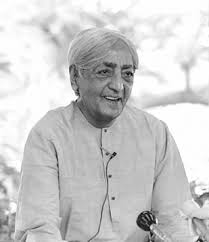
Raghu: Ahhh yes, a couple of things prompted me to write this. Desikachar started teaching Krishnaji, when he was young. Krishnaji was particularly fond of him and Sir naturally was very drawn into the aura of Krishnaji (it is impossible not to get drawn to the beauty of Krishnaji). Sir often spoke a lot about his interactions with Krishnaji. Some of the insightful statements of Krishnaji were very much in line with the yoga sutra or the Bhagawad Gita. Shri. Desikachar and his father’s understanding came from a deep understanding of the text the tradition and their own context. But Krishnaji’s understanding or insights were like bolts of lightning. He was a unique person and the space created when one interacted with Krishnaji was unique. Sir would share many of the conversations he had with Krishnaji during our private lessons too. I used to help at the Krishnamurti foundation with the video filming whenever Krishnaji was in Chennai. I also had the good fortune to have met Krishnaji and had several interactions with him from time to time. Then I used to go back to Sir and discuss my conversations and insights and relate it to yoga. When I wrote the book “Learning Through Yoga”, I gave Krishnaji a copy and he encouraged me not to give up learning yoga. He even offered to help Shri. Desikachar in many ways, but most importantly he kept repeating ‘you must continue your deep study of yoga and ensure that the depth of learning that your father has is kept alive.’
Radhika: Did Krishnaji have a regular sAdhanA, because sometimes when I read his writings it is not very clear to me about his own antaranga sAdhanA?
Raghu: of course, he practiced yoga every morning. He saw the importance of being in touch with one’s body. The other thing Krishnaji said was ‘The truth is in the now, not somewhere in the future.’ This is clearly said in the yoga sutra also. What we call sAdhanA is creating the conditions to increase the probability to have such insights. This understanding was very clear in both Krishnaji’s and Krishnamacharya’s teachings. The mind needs a certain subtlety or quietness to get into an insightful state which a yoga practice of focusing on body, breath etc., helps. In short, it is the observation of the self.
Gayatri: The classes must have been very profound.
Your primary work on inner process work or antaranga yoga sAdhanA was a culmination of Prof. Pulin Garg’s research and Shri. Desikachar’s study of yoga, right?
Raghu: Yes
Gayatri: How did Shri. Desikachar approach the whole idea of western psychology and yoga?
Raghu: Initially, when I went to him, he asked me “why do you want to study yoga?” I remember telling him that I wanted to understand the parallels between yoga sutra and psychology. He agreed to help me. Prof. Pulin Garg was also deeply interested in yoga, so when they met there was a deep appreciation of each other.
Gayatri: He was open to collaborations like these?
Raghu: Absolutely, even his father was never closed. We also did a lot of work with Dr.Arjun Rajagopal who was a well-known cardiac surgeon and with Prof. T.M. Srinivasan a Biomedical Engineer. We would discuss various illnesses and look at it from ayurveda’s point of view, western medicine, yoga etc. The goal was not to make it east vs west but create a dialogue between them so that the insights became deeper in each of these fields.
This idea of traditional vs modern is a creation of the colonized mind. A truly Indian mind never played this ping pong. We always have a vaidika and laukika part in any ritual. There are core ideas which are very important, and we respect that but do not get bound by everything traditional. Like for example, Deepawali may have some local flavors depending on which part of the country you are in, but some central elements will remain the same. This dialogue on what is important and essential is part of our Indian thought process.
Gayatri: But we are in conflict right now?
Raghu: These conflicts are artificially created, it started when we were ruled by people who created this divide of old vs new etc. In KYM, every Saturday Sir would invite people from all walks of life and have dialogues on various topics. He would even ask each of us to study a topic like Shankara’s advaita and come back to have a dialogue and that is how we learnt.
The anchorage to yoga was very strong, each time I went out and read the yoga sutra which was my core learning. But we were encouraged to study other approaches also.
Gayatri: Did he mention the qualities required for a yoga teacher?
Raghu: He clearly said that he would trust yoga only with a person who has a deep and abiding concern for the condition of man. This statement is beautiful, also because it is what Krishnaji is all about.
Gayatri: You mean someone who has experienced duHkha?
Raghu: No, it is about your own duHkha. If you are not concerned about the condition of mankind you should not pretend to teach yoga, it is only fitness or gymnastics. As a student, he looked for the reason each of us wanted to learn yoga. We were a group who had diverse interests and he could interact with each of us in very meaningful ways. There were students from all over the world who came to him. But his attention was more directed to the one’s who were serious about life.
Gayatri: I am sure he must have gone through challenging times like his father; do you have any insights as to how he navigated through those?
Raghu: He clearly mentioned his implicit faith in his father. There were many financial difficulties and many a times his father helped him decide and that was final. Like the house they lived in was bought by Shri. Desikachar when his father gave a go ahead, though they were not sure how they could afford it.
Gayatri: Don’t you think that there was a huge expectation on him being Yogacharya Krishnamacharya’s son?
Raghu: Yes, not only being his son but also the nephew of BKS Iyengar. Sir had to discover his own uniqueness and create a niche. He could not be his father’s clone nor his uncle’s shadow. What helped him was Krishnaji’s encouragement to push him to teach what was inside of him and that is how he bloomed. KYM was his own vision after all.
Gayatri: Tell us something about KYM too.
Raghu: KYM was not only about AsanA-PrANAyAma but all aspects of yoga right from chanting to yoga sutra. Sir taught all aspects of yoga just like his father, because he studied the depths of the subject. That was the beauty of the school- versatility was at its best and being sensitive to the person’s needs and teaching accordingly was given importance. KYM was supposed to be a contemporary institutional space to teach yoga. Yogacharya Krishnamacharya was an institution by himself, you learnt from him and after some time when he felt you were ready, he would ask you to go and teach further. But KYM also included people like Prabhakar, Mukundan and me, who were very much a product of modern India. KYM was created as a space to teach in the emerging context and it worked well.
Gayatri: So, Shri. Desikachar being the closest to Krishnamacharya really learnt the maximum, right?
Raghu: Yes, he did, right from yoga sutra, Upanishads, Ayurveda etc. Till the end he embodied all his father’s teachings.

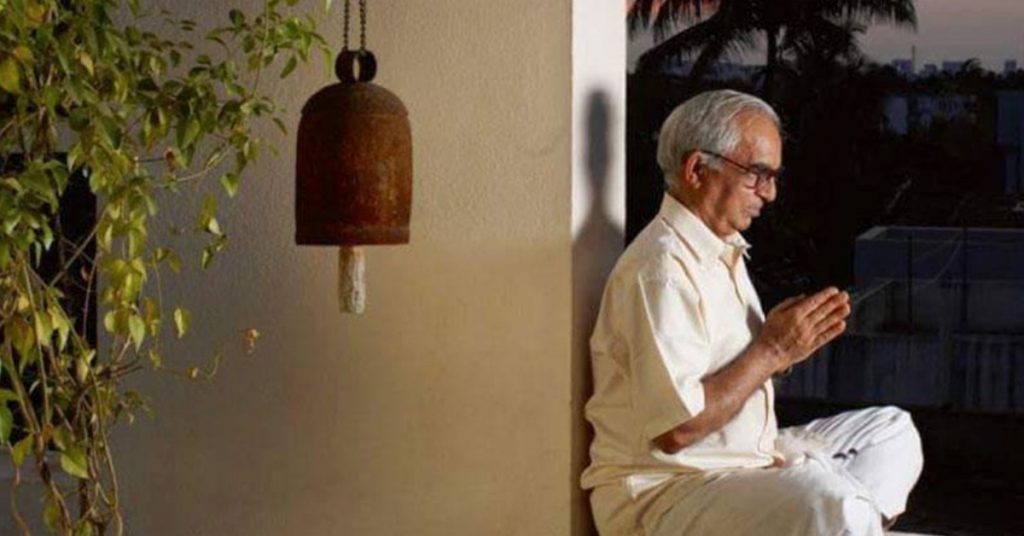
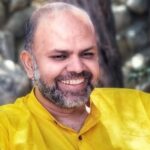 Anoop is a student of Yoga, an entrepreneur, a coach and a father of two young boys. He has led successful leadership stints in both the corporate and non-for-profit sectors. On encountering the country’s water/farmer crises at close quarters, he decided to pause and examine the impact various ‘isms’ – capitalism, colonialism, etc., were having on us as individuals, families, the society and the environment at large. This quest led him to formally engage with traditional Indic knowledge systems while also learning from the latest advances in science – about our physical and mental wellbeing, importance of body and mind work in healing trauma and the urgent need for a conscious rebuilding of family / work / social structures if we have to thrive individually and collectively. Insights, frameworks and processes gleaned from these on-going studies, an anchorage in his own personal practice and his wide-ranging experiences is what Anoop brings to facilitation/coaching spaces in Ritambhara and his various professional engagements.
Anoop is a student of Yoga, an entrepreneur, a coach and a father of two young boys. He has led successful leadership stints in both the corporate and non-for-profit sectors. On encountering the country’s water/farmer crises at close quarters, he decided to pause and examine the impact various ‘isms’ – capitalism, colonialism, etc., were having on us as individuals, families, the society and the environment at large. This quest led him to formally engage with traditional Indic knowledge systems while also learning from the latest advances in science – about our physical and mental wellbeing, importance of body and mind work in healing trauma and the urgent need for a conscious rebuilding of family / work / social structures if we have to thrive individually and collectively. Insights, frameworks and processes gleaned from these on-going studies, an anchorage in his own personal practice and his wide-ranging experiences is what Anoop brings to facilitation/coaching spaces in Ritambhara and his various professional engagements.
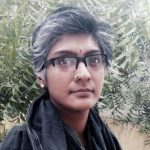 Priya is a Yoga therapist in the Krishnamacharya tradition. She adapts Reiki & energy work, Vedic chanting, life coaching & Ayurvedic practices in her healing spaces. She is committed to nurturing collectives that have the praxis of Yoga at their heart.
Priya is a Yoga therapist in the Krishnamacharya tradition. She adapts Reiki & energy work, Vedic chanting, life coaching & Ayurvedic practices in her healing spaces. She is committed to nurturing collectives that have the praxis of Yoga at their heart.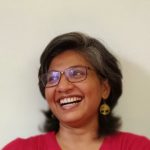 Anisha has been on an exploration to understand herself through yoga for the last 15years which led her to teaching yoga, yoga therapy and inner work through yoga.
Anisha has been on an exploration to understand herself through yoga for the last 15years which led her to teaching yoga, yoga therapy and inner work through yoga.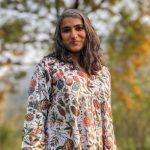 Apoorva chanced upon Yoga in her early 20s. A spark was lit within and there was no turning back. Her exploration led her to the Krishnamacharya tradition more than a decade ago. Curious about human behaviour and what drives it, she was thrilled when her search ended (and also began) when she first came upon the Yoga Sutra, which illuminated a path towards answering many questions that had been held for a long time.
Apoorva chanced upon Yoga in her early 20s. A spark was lit within and there was no turning back. Her exploration led her to the Krishnamacharya tradition more than a decade ago. Curious about human behaviour and what drives it, she was thrilled when her search ended (and also began) when she first came upon the Yoga Sutra, which illuminated a path towards answering many questions that had been held for a long time. Anita is a yoga teacher and therapist in the tradition of Sri.T.Krishnamacarya and Sri T.K.V. Desikachar, a Reiki practitioner and a Life Coach. She is also the founder of Vishoka, a center for learning Indic and energy-based frameworks for living and healing. Her deep concern for human suffering and the problems of unsustainable living kept her on the path of seeking an integrated approach to looking at life, living, learning and healing.
Anita is a yoga teacher and therapist in the tradition of Sri.T.Krishnamacarya and Sri T.K.V. Desikachar, a Reiki practitioner and a Life Coach. She is also the founder of Vishoka, a center for learning Indic and energy-based frameworks for living and healing. Her deep concern for human suffering and the problems of unsustainable living kept her on the path of seeking an integrated approach to looking at life, living, learning and healing. Ankit is a seeker in the wisdom traditions of India. The core of his work includes creating dialogic spaces where people can look within and see the connection between their inner and outer lives. Inspired by the likes of Gandhi, Aurobindo, Vivekananda and Guru Gobind his experiments in service took him back to his roots in Punjab where he is creating a community-led model of higher education which is open, inclusive and accessible for all. Ritambhara for him is a space for engaging in a community which is committed to a DHramic life. He anchors his work of learning and leadership in the Antaranga Yoga Sadhana and the humanistic wisdom of Mahabharata.
Ankit is a seeker in the wisdom traditions of India. The core of his work includes creating dialogic spaces where people can look within and see the connection between their inner and outer lives. Inspired by the likes of Gandhi, Aurobindo, Vivekananda and Guru Gobind his experiments in service took him back to his roots in Punjab where he is creating a community-led model of higher education which is open, inclusive and accessible for all. Ritambhara for him is a space for engaging in a community which is committed to a DHramic life. He anchors his work of learning and leadership in the Antaranga Yoga Sadhana and the humanistic wisdom of Mahabharata.